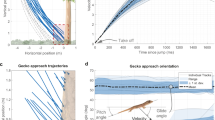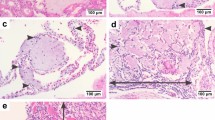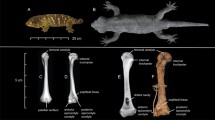Abstract
DURING a comparative study of the osteology of some Egyptian geckos, including Stenodactylus stenodactylus, Tropiocolotes tripolitanus, T. steudneri, Ptyodactylus hasselquistii, Hemidactylus turcica, Tarentola mauritanica and T. annularis, a rather interesting detail concerning the caudal region of the vertebral column was observed, which has not previously been recorded in living Lacertilia, so far as we are aware. It concerns the presence of caudal ribs in geckos. Among the above-mentioned species, such ribs were found in both Tarentola annularis and Ptyodactylus hasselquistii.
This is a preview of subscription content, access via your institution
Access options
Subscribe to this journal
Receive 51 print issues and online access
$199.00 per year
only $3.90 per issue
Buy this article
- Purchase on SpringerLink
- Instant access to full article PDF
Prices may be subject to local taxes which are calculated during checkout
Similar content being viewed by others
References
El-Toubi, M. R., J. Morph. (Philadelphia), 84 (1949).
Hollister, G., Zoologica (New York), 12 (1934).
Williston, S. W., “The Osteology of Reptiles” (Harvard Univ. Press, 1925).
Watson, D. M. S., Phil. Trans. Roy. Soc., Lond., B, 214 (1926).
Watson, D. M. S., Proc. Zool. Soc., Lond. (1918).
Author information
Authors and Affiliations
Rights and permissions
About this article
Cite this article
EL-TOUBI, M., KHALIL, A. Caudal Ribs in Geckos. Nature 166, 1120 (1950). https://doi.org/10.1038/1661120a0
Issue date:
DOI: https://doi.org/10.1038/1661120a0



